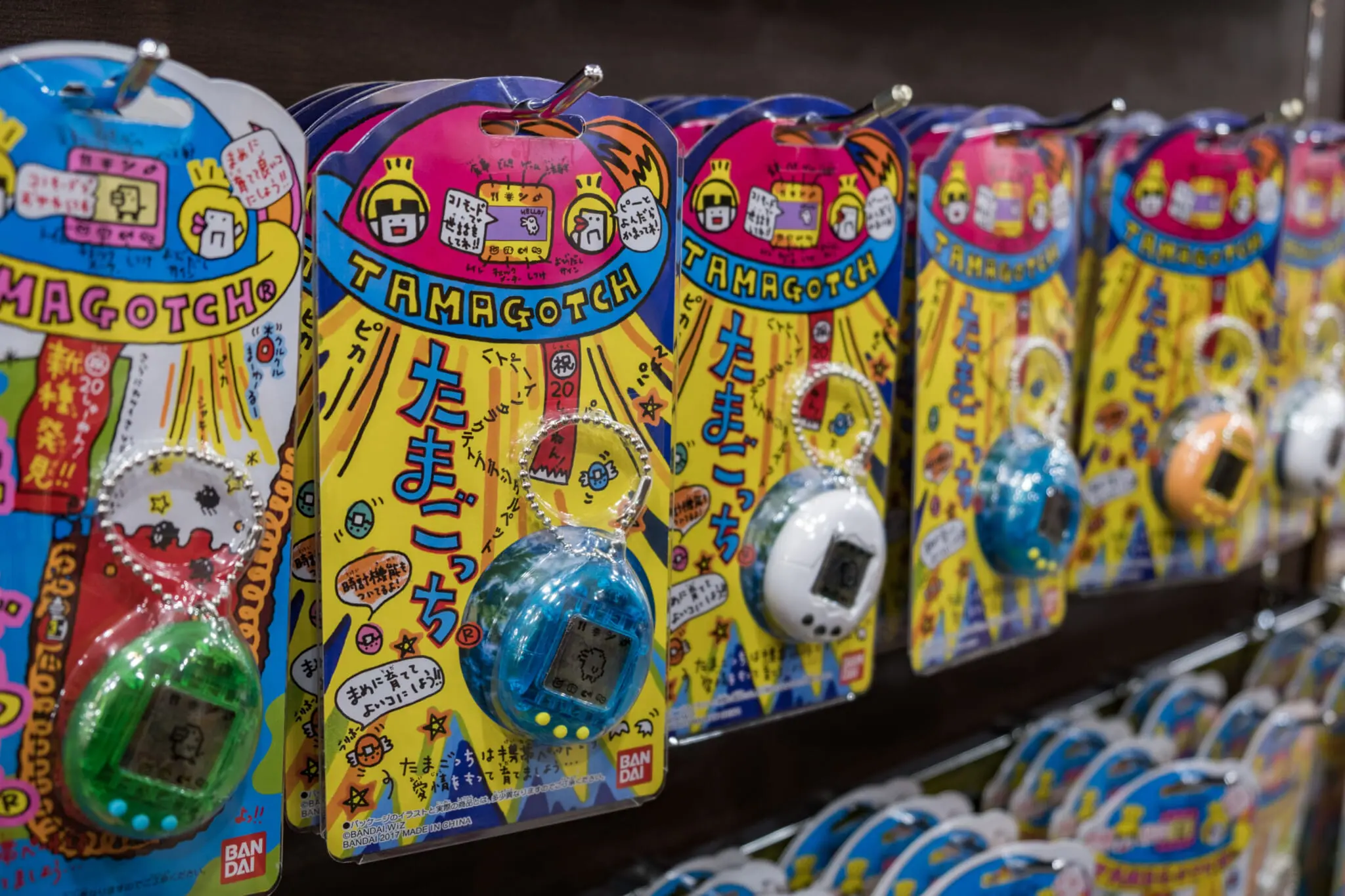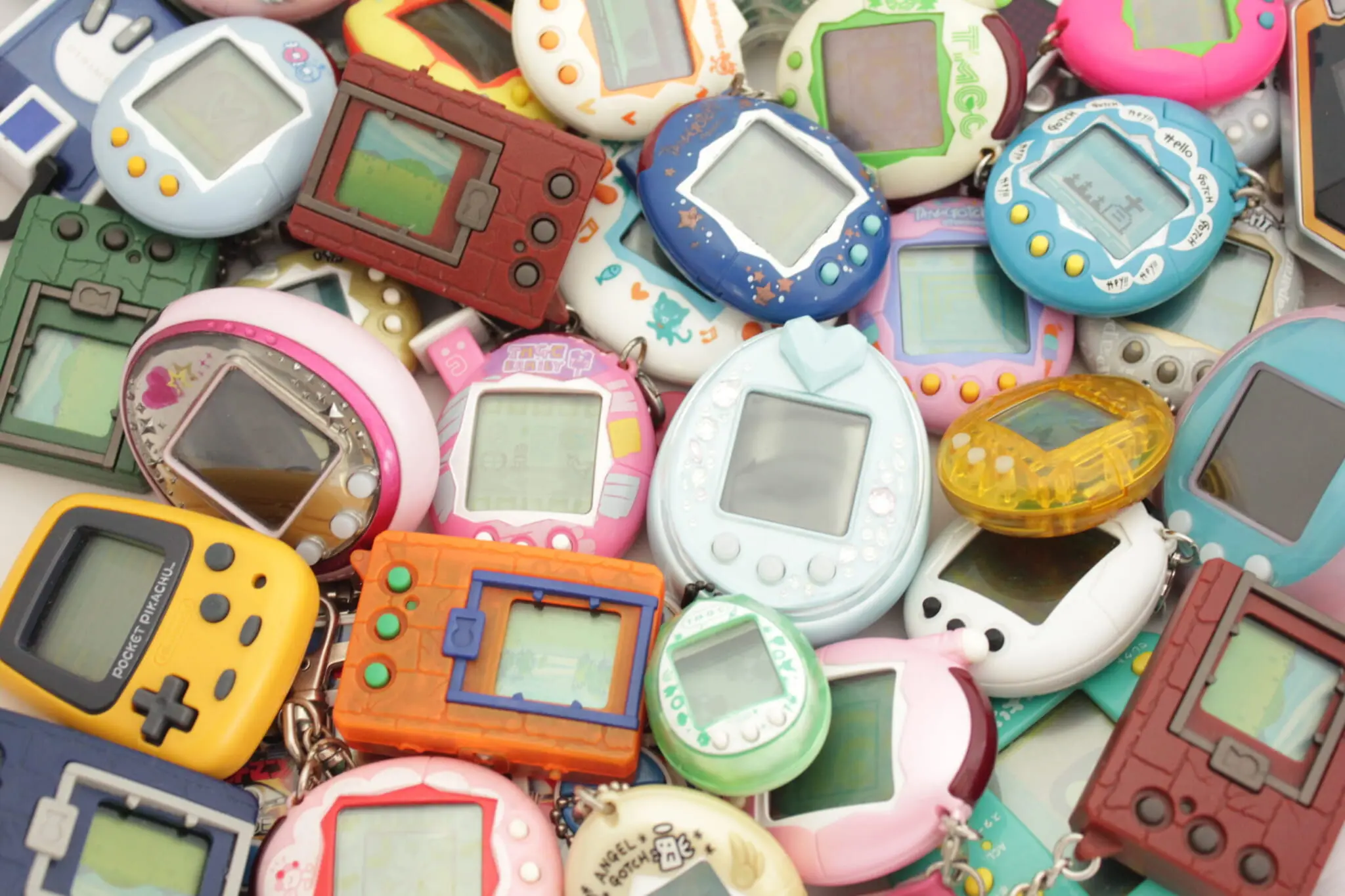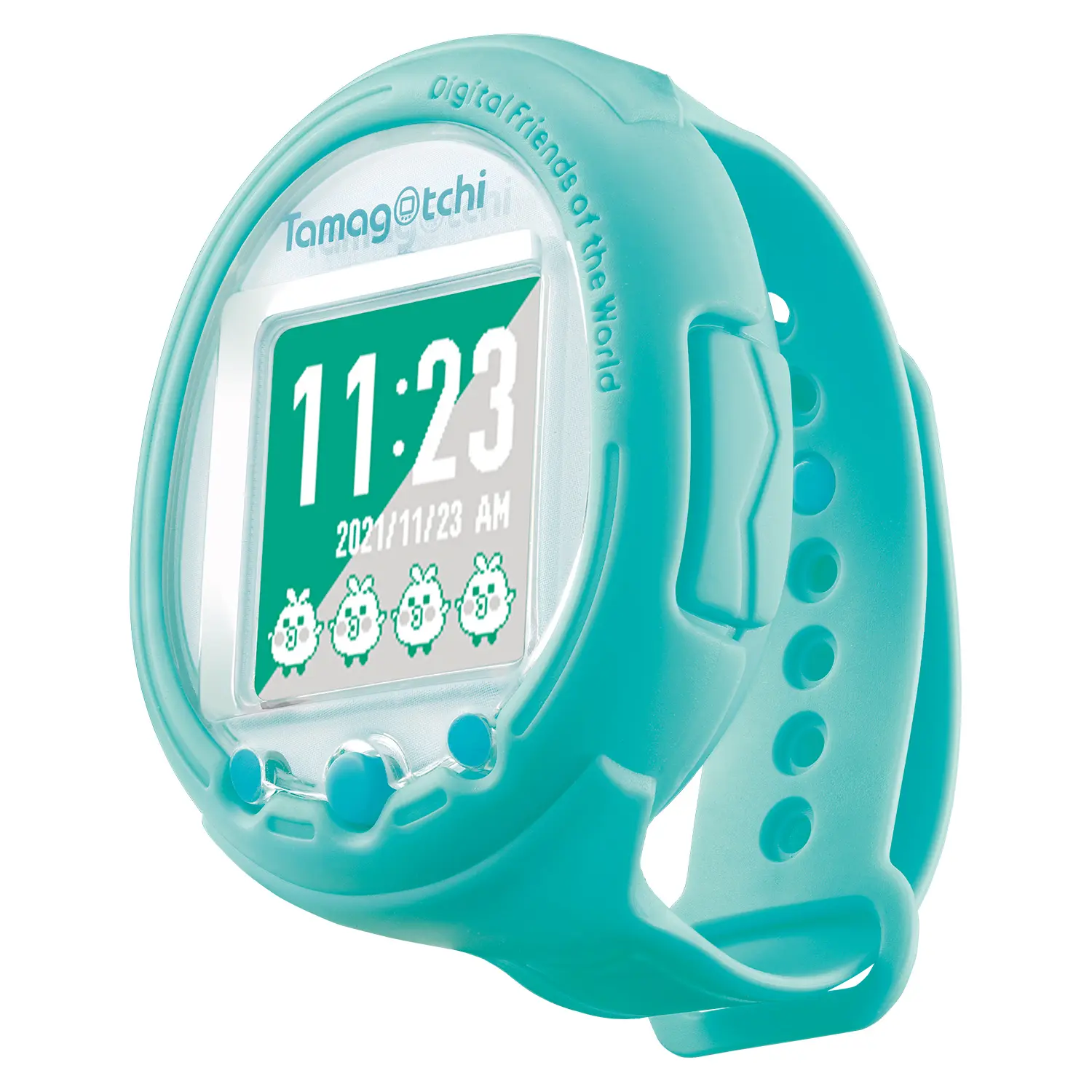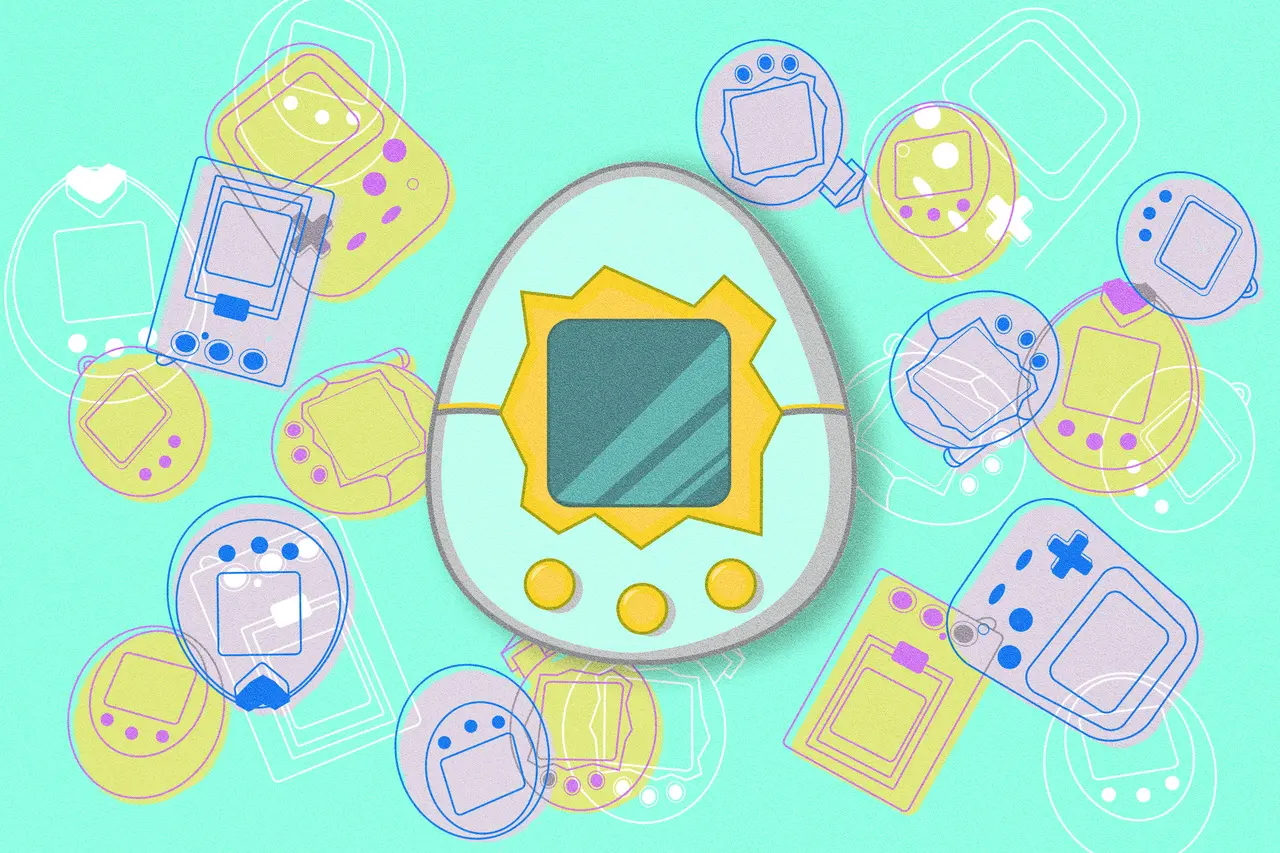If it’s bewildering news to you that Tamagotchis already existed in the Dark Ages of the late 20th century, you are certainly not yet of drinking age and have to be home at a particular time. Likely you are not even reading this because you are busy taking care of the Tamagotchi Smart sitting on your wrist. And if you are asking yourself what a Tamagotchi is, then you have probably spent the last three decades in outer space. Take a seat, get used to gravity again, and read on.
A Tamagotchi is a cute virtual creature that needs your attention, living in an egg-shaped, egg-sized plastic shell. With the touch of a button, you can feed it, pet it and find other ways to entertain it. Actually, you have to. If you don’t, it grows sad and hungry and dies. If it doesn’t die, it will mature, find a partner, lay an egg and leave you. From the egg, a new Tamagotchi hatches. Then the whole thing starts all over again. It’s fun. And potentially traumatizing.
With well over 50 different hardware models, countless accessories, several software versions and adaptations into other media, the history of the Tamagotchi is a lot of ground to cover. But everybody yearning to be down with the young crowd should at least know of the Three Big Phases.

Photo by Nicolas Maderna via Shutterstock
Tamagotchi Origins
The word Tamagotchi is a portmanteau of “tamago,” the Japanese word for egg, and “wotchi,” a Japanese approximation of the English word watch. The concept was created by Aki Maita in 1996, then a 30-year-old employee at toymaker Bandai. She got the idea while watching a television program about a boy who insisted on bringing his pet turtle to kindergarten (disclaimer: most kindergartens and other educational institutions won’t let you bring a Tamagotchi any more than a turtle onto their premises).
In 1997, she told CNN how she took the prototype to the streets of Shibuya to test her invention on actual schoolgirls, as Japanese marketers are prone to do to win this most coveted of all target groups. “Their eyes lit up,” she said. Maita sourced their opinions with elaborate questionnaires concerning factors like color (white was their favorite), packaging and chain design.
The tried and tested Tamagotchi hit the Japanese market in late 1996, selling millions in its home country alone and taking the rest of the world by storm the following year. The eggs were snatched up by international customers so quickly, Bandai simply couldn’t produce enough. Soon Tamagotchi black markets were flourishing around the globe.
The first generation of gadgets displayed rather simple creatures based on animals, objects and people. As much as young girls loved them, older generations were critical. Parents and educators worried that girls became too attached to their pets, who could die if they went half a day without care (newer models are sturdier). Rumors of teen suicides over dead Tamagotchis made the rounds, although those are considered baseless urban legends today.

Photo by omeus via Shutterstock.com
Tamagotchi Rebirth After Death
The success didn’t last forever anyway. Assuming that everybody who didn’t have a Tamagotchi would want one sooner or later (most likely sooner), Bandai went into over-production. However, as with any trend fueled mainly by teenage girls, the craze only lasted so long. The original Tamagotchi lovers got too old for toys while younger generations had other obsessions. In the end, 2.5 million of the colorful eggs didn’t find a home, resulting in a considerable loss of $70 million for Bandai; a Tamagotchi mass death that traumatized more company executives than teenage girls.
That didn’t stop the company from giving the concept another shot a few years later. In 2004, the Tamagotchis rose from their graveyards to charm children and concern adults once again. With the Tamagotchi Plus (known as Tamagotchi Connection internationally and Connexion in the UK), the virtual pets entered the social media age. They could connect via infrared, play together, give each other gifts and mate (nothing too explicit). Relationships were managed via friends lists. Later models in the same line let the Tamagotchis go to school and get a job, or form a band instead.
While the Tamagotchi didn’t entirely fade away with the Plus series, subsequent lines caused less of a public stir. The egg became more of a fixture than a craze. It took the product’s 25th anniversary to initiate its next big boom.

The Smart Age of Tamagotchi
With the Tamagotchi Smart, the toy’s most recent incarnation, released in 2021, the Tamagotchi finally comes full circle. While the “-otchi” part of the name was always derived from the word watch, the new Tamagotchi actually is one. A smartwatch even, by the manufacturer’s definition, although, unlike other smartwatches, it doesn’t monitor your well-being. It only monitors the well-being of the creature inside of it. The core unit of the USB-powered Tamagotchi Smart still has the form of a good old egg, but it comes with a wristband to stick it in. And, yes, one of the screens you can conjure up on the new touch display does tell the time.
The biggest draw of this model, however, is its ever-growing range of special editions with exclusive content contained on smart cards. Joining brands with other companies’ intellectual properties, there are Tamagotchis based on Sanrio characters, manga and anime, and even the pop group NiziU.
With the Tamagotchi Smart, the legend lives on. Just like in the old days, once your baby starts its artificial life, it doesn’t pause. This time, there aren’t even any reliable cheats or workarounds to stop time for the little creatures. The internet is full of tips on manipulating older models’ settings to give their owners a break, but the Tamagotchi Smart seems unhackable. So, parents should keep one thing in mind before they let a Tamagotchi into their home: Someone has to keep it entertained and alive during school hours. And it won’t be their underage owner.









